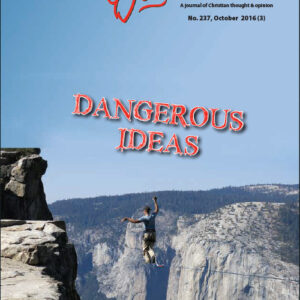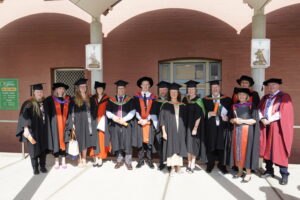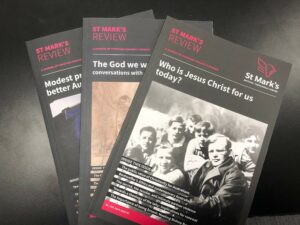Last year witnessed the publication of Matt Anslow’s Fulfilling the Law and the Prophets: The Prophetic Vocation of Jesus in the Gospel of Matthew (Pickwick Publications, 2022), originally written as a doctoral thesis through St Mark’s and CSU’s School of Theology. This past June, Dani Treweek’s new book on The Meaning of Singleness, which was also written as a doctoral thesis through St Mark’s, was launched (see the blogpost for 10 July). In this blogpost, let me draw your attention to yet another superb scholarly study of Matthew’s Gospel, which yet again was initially written as a doctoral thesis through CSU’s School of Theology, St Mark’s, and St Barnabas College in Adelaide. The author is Rev’d Dr Ruth Christa Mathieson, current Principal of St Francis College in Brisbane, and her book, recently published by SBL Press in the series, Emory Studies in Early Christianity, is titled Matthew’s Parable of the Royal Wedding Feast: A Sociorhetorical Interpretation. Let me explain briefly why this book is noteworthy.
If you take a few minutes to look up the parable of the Royal Wedding Feast in Matthew 22:1–14 and read it with care, you will almost certainly come away from reading this parable puzzled and perhaps even perplexed. This parable is explicitly identified as a parable providing insight into God’s heavenly reign, but the king in the parable acts both intemperately and inscrutably, especially at the end of the parable when he orders that a man present at his wedding feast be bound and thrown out for failing to wear appropriate wedding attire—or perhaps for failing to respond when asked how he gained admission into the festivities without suitable wedding clothing. Down through the centuries, interpreters have offered multiple explanations for what the wedding clothing might mean, and in this new book Ruth Mathieson offers her own carefully considered perspective on what Jesus (or Matthew) might have had in mind when ending this parable as he did.
To conduct her detailed exploration of the parable of the Royal Wedding Feast, Mathieson employs a form of sociorhetorical interpretation pioneered by Vernon Robbins in the 1990s. This interpretative approach is something like a toolkit of methods, each of which focuses on a different facet of an ancient text, including literary and rhetorical features within the text, historical and socio-cultural factors behind the text, and dimensions of the dynamic exchange that occurs in the act of reading itself. Few studies to date make use of every interpretative tool within this sociorhetorical toolkit, choosing instead to make selective use of some tools at the expense of others. In this case, however, Mathieson patiently and painstakingly makes use of the full gamut of interpretative tools in the sociorhetorical toolkit—with particularly insightful results.
Ruth Mathieson’s new book is already held by the St Mark’s Anglican National Memorial Library, and if you choose to take a peek here are some of the things you will discover. First, you will learn that to understand a single parable in Matthew’s Gospel, you need a good understanding of the Gospel as a whole, including its narrative shape and what can be surmised about significant background issues. You will also find that an understanding of the parable of the Royal Wedding Feast is deepened by attending to potential Old Testament intertexts, as well as non-biblical texts like 1 Enoch, Tobit, and rabbinic parallels. Perhaps most importantly, you will find that the most valuable resources for making sense of this particular parable come from other passages within Matthew’s Gospel, most notably the teaching of Jesus in chapter 18, which provides Mathieson with interpretative clues for making a plausible case about the reason for an unsuitably attired man’s binding and eviction from the king’s wedding feast. Chapter 8 also provides insight into Mathieson’s own personal context when writing the thesis on which this book is based, which prompted her thinking in a particular direction. And finally, although not too many of you may be fascinated by method, in this book you will be provided with as helpful an explanation of this particular form of sociorhetorical interpretation as you are likely to find.
Matthew’s Parable of the Royal Wedding Feast by Ruth Christa Mathieson is meticulously researched, erudite, and illuminating. I have learned much from reading it, and you will, too.
—David Neville












